Why Clothing and Comfort Matter for AP Exams
When you think about exam prep, your mind probably jumps to study schedules, content review, and practice tests — which are absolutely crucial. But there’s a quieter, equally important layer that often gets overlooked: your physical comfort on test day. Small things like whether you’re too warm, too cold, or sitting awkwardly in a stiff chair can chip away at attention, memory retrieval, and calmness. This guide focuses on practical, evidence-informed, and easy-to-apply clothing, temperature, and seating hacks so you can bring every bit of mental energy to the question paper.

Before the Exam: Dress Rehearsal for Comfort
Think of test day as a performance: you wouldn’t show up for a piano recital without rehearsing the acoustics and attire. Try on your exam outfit a few days before and sit in it for an hour while doing practice problems. This helps you notice any chafing, distracting tags, or thermal surprises.
Key Steps for a Dress Rehearsal
- Wear the complete outfit you plan to use (layers, shoes, accessories).
- Sit for a full practice test block — 45–60 minutes — to feel how the clothing interacts with movement and posture.
- Test any items you’ll use in the exam room (sweater, shawl, or lap blanket) to ensure they don’t crinkle loudly or distract you.
Layering: The Simple Power Move
Room temperatures during AP exams are unpredictable. The simplest solution is to dress in layers you can remove or add quickly. Layers let your body regulate heat without affecting concentration.
Layering Rules of Thumb
- Start with a breathable base (cotton, modal, or light synthetic blends) to wick sweat if you get nervous.
- Add a thin insulating mid-layer (light fleece, soft sweater) for insulation that compacts easily.
- Bring an outer layer (zip-up hoodie or cardigan) that folds neatly under your desk without making noise.
- Steer clear of heavy jackets or stiff materials that create bulk or noise when you move.
Shoes, Socks, and Lower-Body Comfort
Your feet influence whole-body comfort. If your toes are cold or shoes pinch, that discomfort will tug at your focus. Choose supportive but flexible footwear and socks that match the temperature.
Practical Tips
- Prefer shoes you’ve worn before and that don’t need breaking in.
- If exams occur in cold weather, pack an extra pair of thin, warm socks in your bag.
- A compact, foldable pair of slip-on shoes or flats can make waiting between exams easier if you’ll be outdoors.
Mental Comfort Through Physical Setup
Test rooms often have generic furniture: narrow desks, old chairs, or odd spacing. You can counter many discomforts with posture strategies and subtle seating adjustments.
Seating Hacks to Reduce Fatigue
- Plant your feet flat on the floor or on a small book if your feet dangle — this gives you a stable base and reduces fidgeting.
- Slide your pelvis forward in the chair so your back can rest against the lower back curve — this improves breathing and concentration.
- Use a rolled-up sweater or small towel as a lumbar support if the chair has no back support (discreet and allowed in most rooms).
- Keep your shoulders relaxed; tense shoulders raise body temperature and increase stress.
Temperature Hacks That Work
Temperature affects cognition more than most students expect. Mild cold can slow processing; mild warmth can calm nerves — but both extremes are harmful. The aim is neutrality and the ability to adapt quickly.
On Test Day
- Arrive early to scout the room. If you can, sit near a door or aisle where temperature tends to be more consistent.
- Ask politely about dress rules for the exam (some rooms have rules about hats or large blankets). Most proctors are fine with discreet comfort items like cardigans or water bottles.
- Bring a small, quiet hand warmer in cooler months (non-electric disposable warmers are portable and silent) — use only if permitted.
What to Pack in Your Comfort Kit
Create a compact, test-day comfort kit you keep in your backpack and only open if needed. It’s a low-effort way to avoid last-minute stress.
| Item | Why It Helps | Notes |
|---|---|---|
| Thin Cardigan or Hoodie | Layer for warmth; easy to remove | Soft fabric, quiet when handled |
| Light Scarf or Wrap | Warms neck and can muffle noise from drafts | Multifunctional — can be used as lumbar roll folded |
| Small Towel or Sweater Roll | Lumbar support; stabilizes posture | Discreet and allowed |
| Thin Socks or Disposable Foot Warmers | Keeps feet comfortable and reduces distraction | Pack separately if weather is cold |
| Water Bottle (clear plastic) | Hydration supports cognitive function | Follow exam rules about bottles/caps |
| Earplugs (soft foam) | Mutes intrusive sounds during testing | Check rules — most proctors allow plain earplugs |
Seating Strategies During the Exam
Once the clock starts, you want to minimize movement and maximize attention. Adopt small habits that keep your body comfortable without calling attention to yourself.
Micro-Habits for Stability
- Adopt a neutral head position — not tilted forward or backward — to ease neck strain.
- Keep wrists straight and relaxed; use the desk edge as a soft guide rather than bracing your elbows heavily.
- If allowed, keep a small piece of cloth under your forearms to prevent distracting fabric noise when you move.
- Breathe in a steady rhythm. Five-second inhales and five-second exhales for a minute can reset focus and regulate body temperature sensations.
When the Room Is Too Cold
Cold is a common complaint: stiff fingers, slow thinking, and shortness of breath from clenching. If you can, layer up. If not, use these micro-strategies.
Cold-Combatting Moves
- Keep your hands warm before the test start: rub palms together or tuck them briefly under your armpits.
- Tiny exercises while seated — wiggle toes, rotate ankles — help circulation without drawing attention.
- Mental visualization: imagine steady warmth in your hands and chest to reduce sensation of cold and lower anxiety.
When the Room Is Too Warm
Heat leads to drowsiness and foggy thinking. Cooling strategies need to be subtle and non-disruptive.
Cooling Tactics
- Expose your wrists briefly — they are good heat-exchange points — and then relax them back on the desk.
- Sip cool water slowly. Small, regular sips refresh without interrupting your flow.
- Focus on short, diaphragmatic breaths that reduce body temperature and anxiety.
Practical Examples: Putting It All Together
Here are two realistic scenarios and how you might apply these hacks.
Scenario A: A Cold Classroom
- Outfit: Breathable tee, light thermal layer, zip hoodie, and thin gloves you can remove if necessary.
- Seat Prep: Place the rolled sweater behind your lower back. Keep feet flat and rotate ankles subtly to keep circulation.
- During Exam: Warm hands by rubbing palms discreetly on your lap between sections.
Scenario B: A Warm, Stuffy Room
- Outfit: Light cotton tee, breathable shorts or pants, and a loose outer layer you can stash under the desk.
- Seat Prep: Move slightly to a chair near an aisle for better airflow if possible.
- During Exam: Sip cool water from a clear bottle and use focused breathing.
Study-Day Prep: Simulate Conditions
It’s not enough to know the hacks; practice them. Schedule at least two full-length practice tests in conditions that mimic unknowns: try one in a slightly cool room and another in a warmer space. Use the outfit and comfort kit you plan to bring. These simulations reduce surprises and build confidence.
Sparkl’s Role in Personalized Test-Day Readiness
When comfort and focus are part of a broader performance plan, tailored coaching helps. If you’re working with a tutoring service like Sparkl, mention any physical or sensory sensitivities to your tutor. Sparkl’s personalized tutoring and benefits — including 1-on-1 guidance, tailored study plans, expert tutors, and AI-driven insights — can integrate test-day comfort strategies into your overall preparation plan so your practice tests include both content mastery and environmental rehearsal.
Quick Do’s and Don’ts Checklist
- Do pack layers and test them during practice runs.
- Do bring a small, quiet comfort kit (cardigan, towel, water, earplugs) that follows exam rules.
- Do practice seated posture and breathing during mock tests.
- Don’t wear brand-new shoes or anything that needs breaking in on test day.
- Don’t rely on one strategy — combine small hacks for cumulative benefit.
Common Questions Students Ask
Are earplugs allowed during AP exams?
Rules can vary by exam site and proctor, but soft foam earplugs are usually allowed. Confirm with your proctor beforehand. If you plan to use them during practice, you’ll be less likely to be distracted if you can’t use them on test day.
Can I bring a blanket or pillow?
Large items may be discouraged. Instead, use compact, discreet items like a thin sweater or towel rolled up for lumbar support. Always check the proctor’s guidance before bringing any nonstandard items.
What if I overheat and can’t remove layers during the test?
If removing layers will disrupt others, keep outer layers thin and easily stowable under your desk. Practice quickly folding and tucking a hoodie so it’s ready when you need it.
Evidence-Based Rationale (Short)
Comfort affects attention and working memory: small physical stressors consume cognitive resources, which reduces available mental bandwidth for problem solving. By minimizing sensory distractions (temperature, tight clothing, poor posture) you free up cognitive capacity for retrieval, reasoning, and time management. Practicing in realistic conditions strengthens test-day performance through habituation and reduced novelty.
Final Game Plan — 24 Hours Before the Exam
- Lay out your layered outfit and comfort kit. Do a final test of shoes and socks.
- Pack a clear plastic water bottle and a small snack allowed by the test rules for breaks.
- Run through a 10-minute breathing and posture routine to anchor your morning routine.
- Confirm logistics: test location, arrival time, permitted items, and ID requirements.
Parting Thought
AP exams are a mental marathon — and like any marathon, a thoughtful routine and small, consistent habits are the difference between finishing tired and finishing strong. Clothing, temperature, and seating hacks are not glamorous, but they are high-leverage: they prevent tiny frictions from becoming exam-day derailers. Practice them, personalize them, and make sure your environment supports the brilliant work your brain has already done.

Good luck — you’ve done the hard work. Now make your body as ready as your mind.

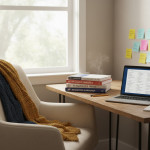
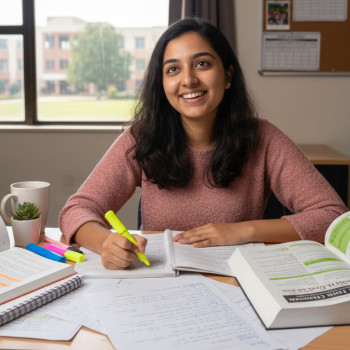
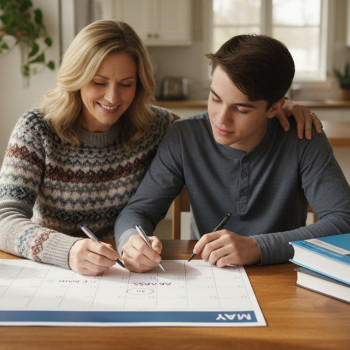

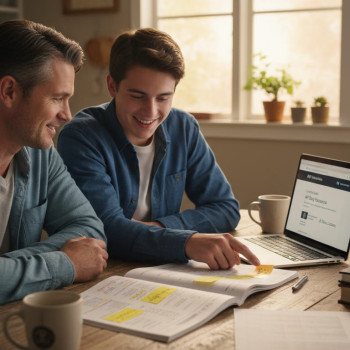
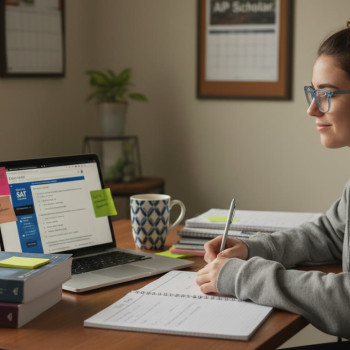
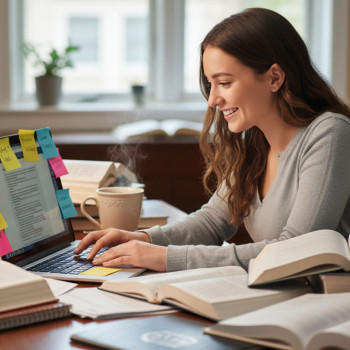












No Comments
Leave a comment Cancel